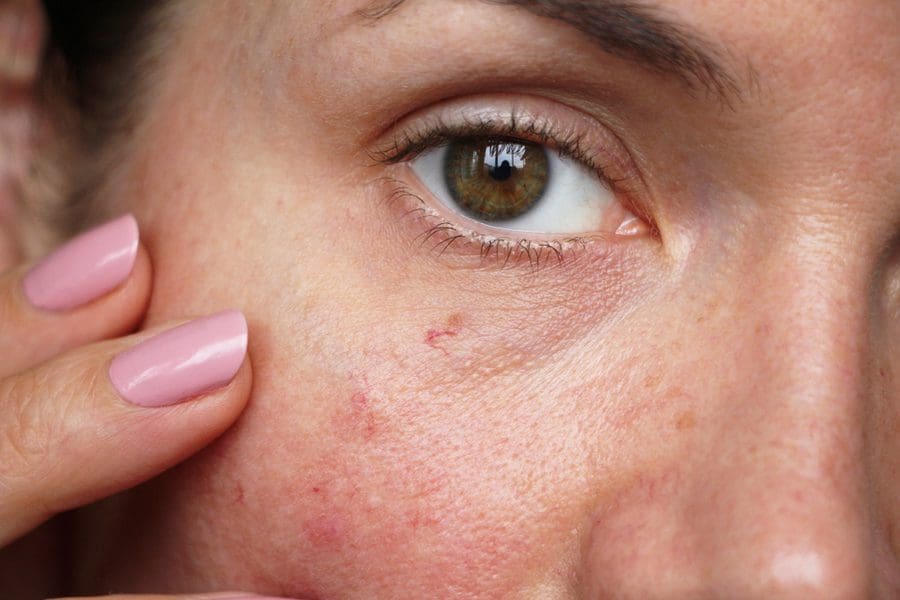Spider veins can be an inconvenience and make people feel self-conscious, especially if they develop into varicose veins and become more prominent.
What is the Difference Between Spider Veins and Varicose Veins?
Varicose veins are enlarged veins that can cause slight discomfort and worsen with age. However, severe pain is uncommon. Women are much more likely to develop varicose or spider veins than men. Some differences in appearance between spider and varicose veins include:
- Spider veins are smaller and often red or blue
- They are closer to the skin’s surface than varicose veins
- They appear to be a spider’s web with short, jagged lines
- They usually cover either a small or extensive area of the skin
- Spider veins are typically found on your face and legs
Do Spider Veins Need Treating?
Although they can cause slight discomfort sometimes or may be a cosmetic concern for some, spider veins don’t always require medical treatment. If, however, you have them treated, sclerotherapy is a standard treatment with surgery sometimes required in severe cases. If you’re unsure about whether to get your spider or varicose veins treated, signs of discomfort can include:
- An itching or burning sensation on your skin on the legs/ankles.
- Muscle fatigue and regular leg cramps
- Swelling of the feet and legs
Can Spider Veins Be Prevented?
Certain factors can cause spider veins, they can be hereditary, or can be down to lifestyle factors such as obesity, age, how active you are, or they can be hormonal. They can be prevented by taking certain steps, such as:
- Not crossing your legs when sitting down
- Elevating your legs when resting
- Regularly exercise to improve your circulation, leg strength and vein strength
- Don’t stand for long periods or if this isn’t a choice, regularly take breaks and rest your legs
- Wear compression stockings like the EvoNation Graduated Compression Pantyhose 20-30 mmHg






